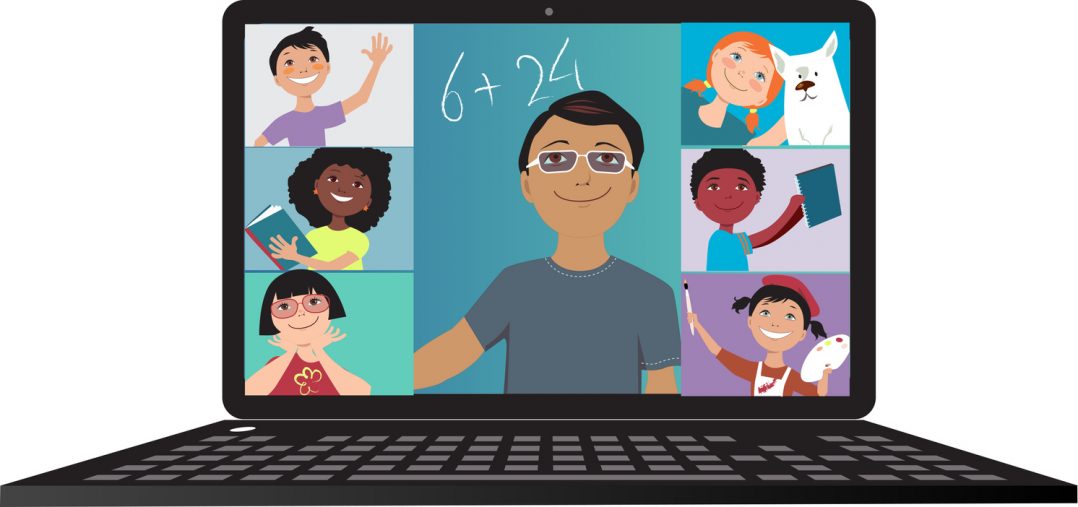GUEST BLOG: Here are Three Ideas to Support Educators of Latinx Students in Online Instruction

Guest Blogger Jorge Valenzuela is the founder and CEO of Lifelong Learning Defined.
Now more than ever, teachers must be energized and creative to keep students informed and engaged. That’s especially true when it comes to teaching students who faced significant social, economic, and linguistic barriers even before the pandemic. Take, for example, Latinos and English learners (ELs).
According to 2016-2017 data from the National Center for Education Statistics, the national average for high school graduation was 85%. Still, it was 80% among Latinos, and the U.S. Department of Education data from 2016 showed ELs graduating at a rate of 67% compared to a national average of 84%. The reasons for this opportunity gap are many.
Keep up with the latest from UnidosUS
Sign up for the weekly UnidosUS Action Network newsletter delivered every Thursday.
Often students representing these demographics have inherited a cycle of poverty, live in distressed communities or homes, and are enrolled in low-income schools with few resources and large student-to-teacher ratios. These are young people who are often forced to learn standardized curriculathat may not feel culturally relevant; they may have guardians who struggle to engage with students and the school system because they work long hours or lack in education themselves; and they might even lack the proper technology to keep upIn the case of ELs, few states offer the supports they need to build new language skills that simultaneously acknowledge their linguistic abilities in their home language(s).
As an education coach, author, and advocate, I help teachers find ways to address these structural issues in their own class settings. In the short-term, my coaching sessions require teachers and schools to some extra “relevant tech” training to augment their instruction—but over the long-term—it should help them grow in their pedagogical strategies. This, in turn, could help close the opportunitygap for students who are already struggling and who will continue falling even further behind due to systemic inequities in educationthat have been amplified because of the pandemic.
Given the abovementioned plight of many Latinx students across the United States—I believe that providing them assistance with what is truly needed—in tandem with sound teaching practice that’s augmented with the right edtech—is one of the best ways for teachers to captivate their attention both socially and academically.
After pondering and field testing several important options—I settled on the following three things for teachers to do for leveling up student support and online teaching. Here’s how you can as well. And remember, even though not all students have access to laptops, these days they probably have a smart phone, allowing them to connect with software like Zoom and Nearpod.
- Help students and their families with the real issues.
No doubt, our teachers continuously lose sleep over their students, and at times like this, worrying about them is amplified since we are required to practice social distancing and can now only communicate via devices and apps.
For helping Latinx students effectively establishing and maintaining communication can provide the right emotional support and access to necessities that families desperately need right now. My recommendation is to keep tabs and remain in touch (through a district-approved messaging app/website) while honoring your local government’s response to coronavirus outbreaks to communicate the following pertinent items:
- COVID-19 checklist for parents
- Locations to local food banks and medical care
- Recommendations, resources ,and tips for families
- District-approved digital learning resources
- 3 Ways to Help Students Improve Self-Management Skills in At-Home Learning
- Resources for Latinos Facing COVID-19 & Diabetes
- Emotional Wellness + COVID-19 Resources for Students

- Leverage virtual breakout rooms in Zoom for students to collaborate.
Having students pair up during activities or work in project teams is an integral component of engaging instruction that teachers must strive to uphold at this time. And since practically everyone is using Zoom during COVID-19—Zoom for Education has enhanced free account capabilities that teachers can leverage for better engaging students by allowing them to work collaboratively.
or this purpose, the Zoom platform enables online teachers to place groups of students into breakout rooms. Some examples of how teachers can blend effective teaching strategies with breakout rooms in Zoom for Latino and ELs can include:
- Making group work relevant by allowing students to choose topics that matter to the Latinx community.
- Allowing voice and choice about the type of products students create to demonstrate learning.
- Providing small group instruction with an emphasis on language skills across the content areas.
- Using visuals for encouraging dialogue and comprehension.
- Use their native language as a support for learning English.
- Having them practice with sentence starters.
- Use interactive presentations with Nearpod.
As most teachers already know, keeping students engaged and collaborative virtually with only their traditional PowerPoint slides is extremely difficult. In order to establish good academic habits and norms for Latinx students, we must teach using strategies that are both systematic and reflective—and tech tools need to augment teaching.
Nearpod is a tool that I discovered during the pandemic for dramatically boosting student engagement during remote teaching. Luckily, Nearpod success manager and fellow Latina Michelle Moore—introduced me to the tool and got me proficient rather quickly. The Nearpod platform is designed for student engagement during lessons, and what immediately enticed me was the ability to upload my existing slide decks and then tweak them to add the interactive features I desired for lessons/projects using the ‘add activity.‘
In my own coaching and teaching—I have found that using the ‘add activity’ feature in Nearpod has enabled student participation during my lessons in ways I never thought possible and best of all—in real-time! By adding polls, fill in the blank activities, short quizzes, open-ended questions, and drawing, in tandem with various media such as videos and articles, I have been able to maintain the virtual engagement of my students.
Last Word
With most American schools closed throughout the remainder of the school year and teachers are having to help students and their families both socially and academically more than ever. We appreciate them in ways that words cannot express. Thank you for your service.

Jorge Valenzuela is an education coach, author, and advocate at Lifelong Learning Defined. He provides professional development for teachers on behalf of PBLWorks and the Teach Better Team Speakers Network. Additionally, he’s a published researcher, and an avid blogger, with his work featured in USA Today, Mediaplanet USTA, Edutopia, ISTE, eSchool News, Tech & Learning, PBLWorks, and on Medium. His work helps educators and learners understand and implement computational thinking, computer science, STEM/STEAM, emotional intelligence, restorative practices, and project-based learning.
Valenzuela is a recipient of the ISTE Computer Science Excellence Award and STEM Excellence Award. He has also earned the Lynn Barrier Engineering Leadership Award for his contributions to STEM education in the Commonwealth of Virginia and was recently appointed by the Governor of Virginia to the Virginia STEM Education Commission.



